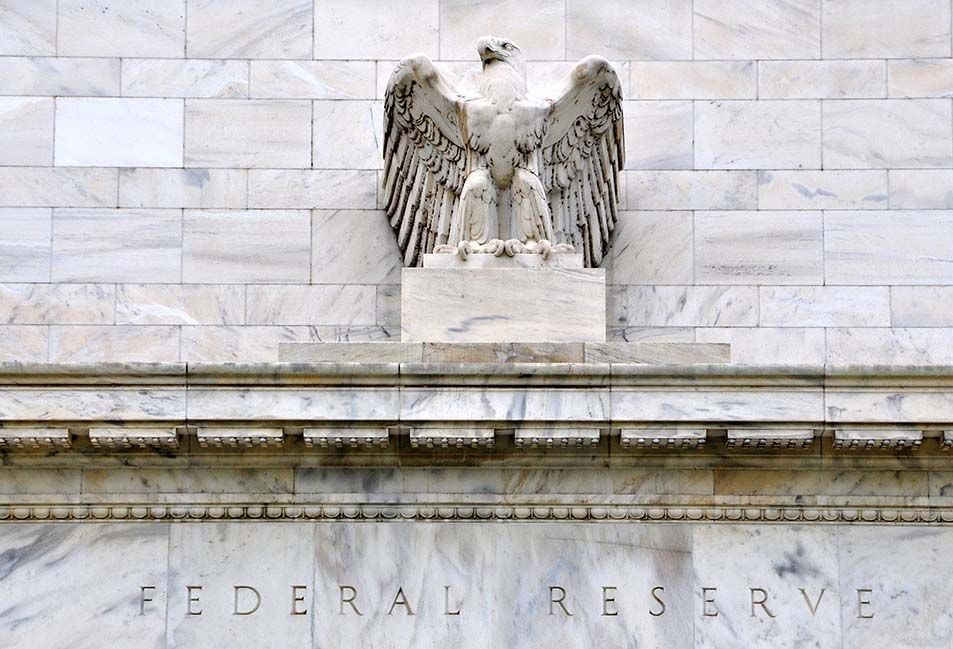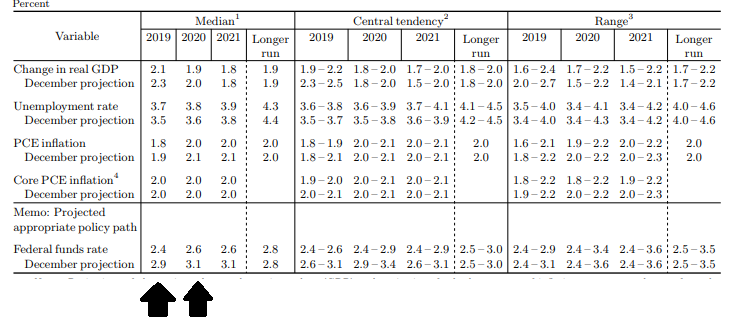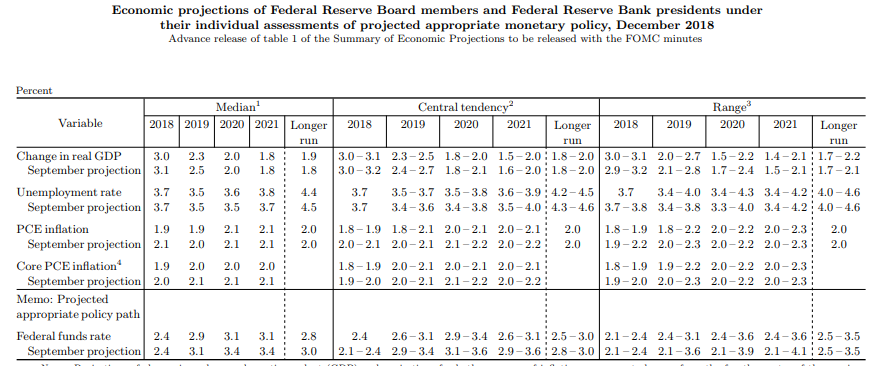The U.S. Dollar: Fed Capitulation Hurts but Outlook to be Determined as much by Events in Europe and China
- Written by: James Skinner

© Xiong Mao, Adobe Stock
- GBP pares loss, USD capitulates, after Fed's March projections unveiled.
- FOMC members now see NO rate hikes in 2019, and just one in 2020.
- Balance sheet run-down also to end early due to global market impact.
The Dollar was hobbled by broad-based losses on Wednesday after the Federal Reserve (Fed) suggested strongly that it will not raise U.S. interest rates at all this year, vindicating the market for having taken a dour view of the policy outlook back in January.
It goes almost without saying the Fed left its interest rate unchanged at the previous range of between 2.25% and 2.5% on Wednesday, in line with market expectations, which means it was the content of the accompanying statement and projection materials that were alway going to be most important.
Those projection materials show that most Federal-Open-Market-Committee members have given up anticipating two interest rate rises in 2019 and one in 2020. A majority of members now anticipate just one more interest rate rise in this cycle, which is penciled in for some time in 2020.
And another accompanying statement made clear the Fed's effort to shrink its balance sheet from the near-$5 trillion size that it was driven to by quantitative easing will end prematurely due to the impact it has had on global financial stability.
The Federal Reserve says U.S. growth has slowed from the "solid" rate seen back in the fourth quarter of 2018 and this can be expected to lead to an easing of inflation over the coming months, which means the bank is under less pressure to raise its interest rate.
However, that's not the reason for it having chosen to carry on being "patient" before raising rates again. The faltering global economy, volatility in overseas financial markets and the reduced domestic inflation pressures explain, when combined together, Wednesday's policy message.
"In light of global economic and financial developments and muted inflation pressures, the Committee will be patient as it determines what future adjustments to the target range for the federal funds rate may be appropriate," says the Federal Reserve.

Above: Federal Reserve dot-plot, March 2019.
"All of this coming after only a few months of slower readings and what the Fed still sees as a solid labor market, but with concerns over international developments," says Avery Shenfeld, chief economist at CIBC Capital Markets. "While the street is still a step ahead of the Fed in pricing in odds of an ease as the next move, the larger than expected swing in the dot plot forecast will be constructive for fixed income today, and bearish for the USD."
The Pound-to-Dollar rate was -0.50% lower at 1.3201 following the announcement, which is a lesser loss than the -0.72% decline seen just an hour or so before. That negative performance is owing largely to Brexit developments. The Dollar index was quoted -0.58% lower at 95.82 following the announcement on Wednesday, while the Euro-to-Dollar rate was up 0.69% at 1.1433.
Markets care about Federal Reserve decisions because of the impact that changes in interest rates can have on international capital flows. Higher or simply rising rates, relative to those offered by other central banks, are normally a draw for international investors and short-term speculators.
The Fed said in January it will be slower to raise rates this year because it wants time to observe future developments in the global economy, given a slowdown overseas could easily undermine U.S. growth and inflation prospects.
That shift came amid a clear and protracted slowing of the Chinese and Eurozone economies, which is thought to have been brought about in large part by President Donald Trump's trade war with China.
However, it wasn't until Wednesday that the Fed got an opportunity to publish a fresh version of its quarterly dot-plot, which reflects FOMC members' projections for the main interest rate over coming years in both graphs and tables. Below is December's dot-plot, which showed the top end of the Fed Funds rate reaching 3% this year.
"The disappearance of both dots is an unnecessarily bold move - markets were not screaming for it - and it runs the risk of the Fed having to reverse course in the summer, when the “cross currents likely will have faded and wage pressure will become the Fed’s biggest concern," says Ian Shepherdson, chief U.S. economist at Pantheon Macroeconomics. "They are very exposed if wage gains continue to accelerate."

Above: Federal Reserve dot-plot from December.
Ultimately, the direction of the Dollar from here will be determined as much by what happens overseas in Europe and elsewhere as it will by what the Fed does. Most analysts say that a growth rebound in Europe that draws a European Central Bank interest rate hike could send the Dollar into a lengthy decline.
The Fed raised interest rates four times in 2018 and has hiked a total of eight times since the end of 2015, citing mounting inflation pressures in the economy that require tighter monetary policy in order for them to be brought under control.
But that rate policy has drawn capital out of, or diverted it away from, other economies during recent quarters and it has also raised the performance hurdle that other financial asset prices must meet in order for investors to be comfortable continuing to hold them.
That's why emerging market currencies were crushed last year and global stock markets have been so volatile, because high interest rates have seen investors hearded toward the Dollar. They've also acted as a headwind for economic growth and seen the value of shares automatically marked down.
"In light of its discussions at previous meetings and the progress in normalizing the size of the Federal Reserve's securities holdings and the level of reserves in the banking system, all participants agreed that it is appropriate at this time for the Committee to provide additional information regarding its plans," the Fed said on Wednesday.
The Fed's policy of shrinking its balance sheet has not been blameless either, because that too has hoovered Dollars up from the international financial system, leading to a scarcity that has helped support the greenback's value.
That was just one more factor that helped the U.S. Dollar to dominate the currency market last year, swinging from a -4% loss to a near-5% gain over the course of 2018, but the Fed said on Wednesday that its calling time on that effort to shrink its balance sheet.
The Fed balance sheet swelled from $870 billion before the financial crisis to more than $4.5 trillion in 2015, with the increase almost entirely the result of quantitative easing. That saw the Fed create new Dollars to buy government bonds in the hope of stimulating growth and stoking inflation through lower market interest rates.
It's since attempted to shrink the balance sheet simply by ceasing to invest the money it receives from the government every time one of the bonds on its balance sheet matures, which is tantamount to a steady withdrawal of liquidity from the financial market. But it also backed away from that policy Wednesday.
"The average level of reserves after the FOMC has concluded the reduction of its aggregate securities holdings at the end of September will likely still be somewhat above the level of reserves necessary to efficiently and effectively implement monetary policy," the Fed says.
Time to move your money? Get 3-5% more currency than your bank would offer by using the services of foreign exchange specialists at RationalFX. A specialist broker can deliver you an exchange rate closer to the real market rate, thereby saving you substantial quantities of currency. Find out more here.
* Advertisement




